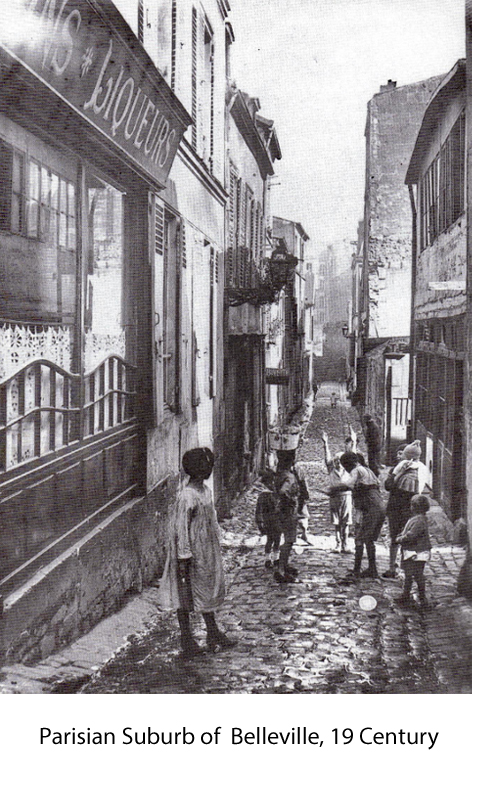The City
and its Poor
Edward R. Udovic, (1993)
""What About the Poor?" Nineteenth-Century Paris and the Revival of
Vincentian Charity," Vincentian
Heritage Journal: Vol. 14 : Iss. 1
, Article 5.
Available at:
https://via.library.depaul.edu/vhj/vol14/iss1/5
| In
this passage Udovic, a Catholic priest, is laying the ground
work for an article about the reaction of his church’s response
to poverty in 19th
century France. To refer to the poor, he uses the French term
Les Miserables, meaning “the miserable or wretched ones”
borrowed form the title of a novel by Victor Hugo. |
The Paris of Victor Hugo's lifetime
(1802-85), was the Paris of Napoleon I, the Paris of the Bourbon
Restoration of Louis XVIII, and of Charles X, the Paris of the bourgeois
July Monarchy of Louis Philippe, the Paris of the short-lived Second
Republic, the Paris of the Second Empire of Napoleon III and of Baron
Hausmann, the Paris of the Revolutions of 1830, of 1848, of the Prussian
siege of 1870, of the bloody Commune of 1871. It was also the
burgeoning, impoverished, often violent Paris of the Industrial
Revolution.
During
these years and in this Paris, Les
miserables were by definition the great
masses of the urban poor who between 1801 and 1850 doubled the
population of a city which was totally unprepared, unwilling, and
unable, to provide for them. La misere,
by the same contemporary understanding,
was the word which came to express their collective experiences of
marginalization, oppression, poverty, and suffering. ('Louis Chevalier,
Laboring Classes and Dangerous
Classes in Paris during the First Half of
the Nineteenth Century,
trans. Frank Jellinek (New York: 1973),
181-84.)
This same Paris by the consensus of
all contemporary statistical measures, and by the consensus of all
contemporary reports and accounts, was acknowledged to be a city that
had fallen dangerously ill. The pathologies which afflicted the city of
Paris were the pathologies which afflicted its poor. Although there was
disagreement as to the diagnosis of the exact nature of this illness
everyone recognized its symptoms and their fatal consequences.
To be
born, to live, and to die among those who were considered by French
society, and who indeed considered themselves as being
les
miserable, meant synonymously not only
that you were poor, not only that you were suffering, not only that you
were an exploited member of the working classes, but also that it was
assumed you were a member, either potentially or in actuality, of what
were then commonly referred to as the "criminal" classes. This meant
that you were considered to be a member, potentially or actually, of
what was described with a palpable sense of dread and fear by "polite"
bourgeois society as, the "barbarians and savages" of
les classes dangereuses,
the dangerous classes.
The Costs to the Poor.
The poor of Paris -- its men and women, its elderly, its adolescents, its children, and its infants -- all paid the comprehensive human costs of this industrialized and capitalistic "urban pathology." They paid this cost in the following measurable and measured ways: in hunger, in sickness, in malnutrition, in the lack of education, in begging, in homelessness, in unemployment, in the exploited employment of women, in abusive child labor, in the general mortality of the great cholera epidemics of 1832 and 1849, in infant mortality, in infanticide, in infant abandonment, in orphans, in suicide, in prostitution, in insanity, in violence, in endemic crime, in class warfare, in riots, civil unrest, and in revolution. In short, the poor paid fully in every conceivable way.
It has been estimated
that in this era Les miserables
always comprised at least one quarter of the
constantly increasing population of Paris, and that in times of economic
crisis the number increased bringing "hunger, sickness and death to
nearly one half of the Paris population."
As
Louis Chevalier has pointed out, these statistics "project a vast
structural poverty, a fundamental poverty ... a monstrous and permanent
poverty ... onto the background of the history of Paris."